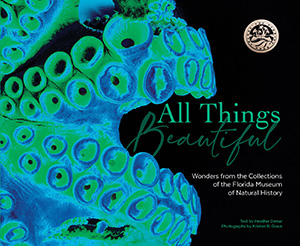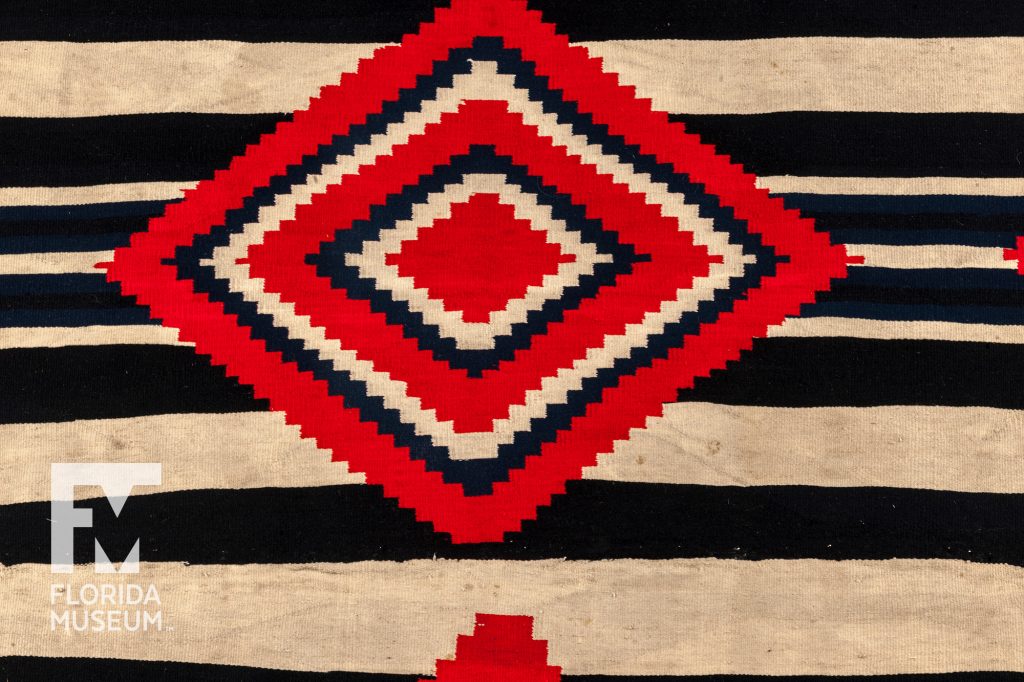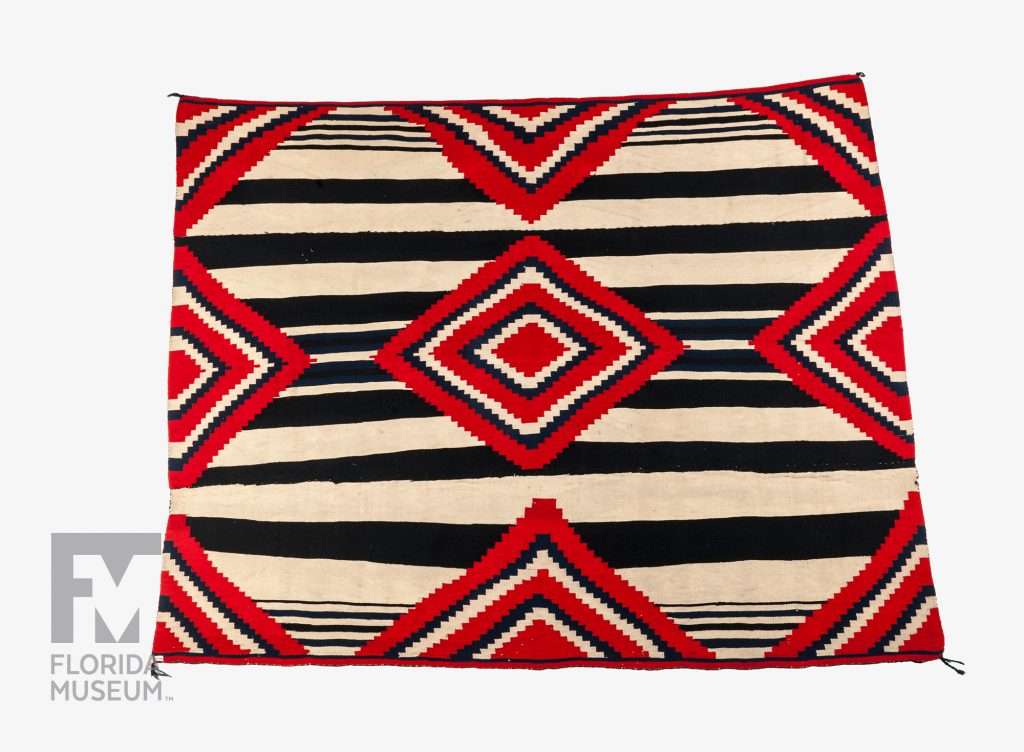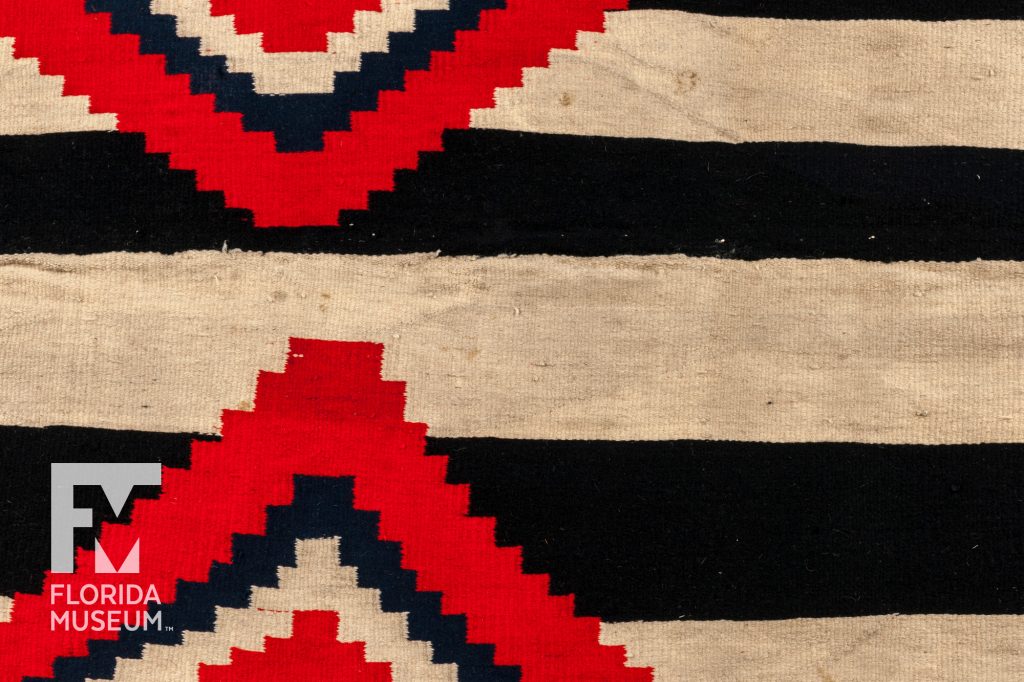The Navajo made this blanket at a time when they were being forced onto reservations and in danger of losing their cultural heritage. The blanket was clearly for someone important since they used their limited resources to make it.
Summary
Chief’s Wearing Blanket
Made by Navajo people, Southwestern U.S.
Dates to 1880-1890
From the Leigh Morgan Pearsall Collection
Collection
Story
This Navajo chief’s blanket is a traditional wearing blanket. It dates somewhere between 1870 and 1900. Wearing blankets are often mistaken by non-native people as rugs, especially since Navajo weavers were and still are so well-known for their exquisite weaving techniques and the rugs that they produce.
These blankets were often worn on the shoulders of a male tribal or clan leader. They were woven with horizontal stripes and geometric figures primarily in red, white and black, colors that are highly symbolic in the Navajo culture. The blue color that is sometimes used is called cochineal blue. This dye is derived from the cochineal bug, a scale insect. It is very difficult to process and therefore very expensive. Any material colored with this dye, for example wool or silk, was used to make apparel for high-ranking individuals only. Wearing blankets were considered to be a very distinguished blanket to own and display.
This chief’s blanket is part of the Pearsall Collection. This collection represents a very important donation in the history of the Florida Museum of Natural History, as it convinced the National Science Foundation to support the construction of Dickinson Hall.
Elise LeCompte
Registrar*
Florida Museum of Natural History
Exhibit
On display Sept. 23, 2017-Jan. 7, 2018, Rare, Beautiful & Fascinating: 100 Years @FloridaMuseum celebrated the Museum’s rich history. Each Museum collection was asked to contribute its most interesting items and share the stories that make them special. Though the physical exhibit is closed, this companion website remains online, providing an opportunity to experience the Florida Museum’s most treasured specimens.
Exhibit Area: 100 Years of History
Theme: Historical Collections
 Want to see more? Explore more than 300 breathtaking color photos of plants, animals, fossils and cultural heritage materials from the Florida Museum of Natural History’s collections in the award-winning book All Things Beautiful available from the University Press of Florida.
Want to see more? Explore more than 300 breathtaking color photos of plants, animals, fossils and cultural heritage materials from the Florida Museum of Natural History’s collections in the award-winning book All Things Beautiful available from the University Press of Florida.
*This title was accurate at the time the exhibit was on display in 2017. Please visit the collection website to verify current staff and student information.


